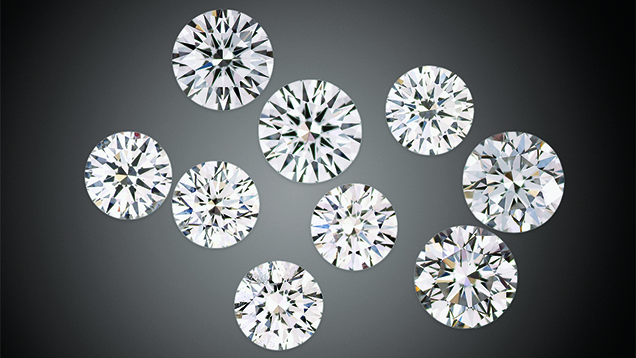Diamond Laser

Ideal laser materials can lase at multiple wavelengths, with excellent beam quality and extremely stable power—a combination of characteristics that require durability, transmission through many wavelength ranges, high heat conductivity, low thermal expansion, and efficient conversion of various input powers into desired wavelengths. Diamond, a material first demonstrated as a laser only five years ago, happens to have all of these characteristics to a far greater extent than other bulk crystals. It is also the only known material capable of producing continuous wave (CW), Q-switched, ultrafast lasing ranging from the deep ultraviolet (UV) to the mid-infrared. Diamond is the material that has the potential to bring Raman lasing into the commercial realm.
While diamond’s compact lattice keeps it from functioning as a traditional solid-state laser—large fluorescing dopant cations would disrupt the lattice—it is highly suited as a Raman laser material. Raman lasers rely on efficiently stimulated Raman scattering (an inelastic light-scattering process) rather than stimulated emission from excited dopant ions. This difference opens up access to many wavelengths not accessible from traditional solid-state lasers. In effect, the laser wavelengths achievable are limited by pump wavelength and medium transparency.
Low efficiencies, poor heat management, and limited transparency ranges have plagued the Raman laser materials explored to date, so here is where diamond can really shine. Silicon, a material with the same structure as diamond, was demonstrated as a Raman laser in 2005. There was much excitement over this for the possibility of Si acting as a gain element in on-chip optical processors. But it has less than a tenth of diamond’s thermal conductivity, much lower transparency, less than half of diamond’s Raman shift, and multiple absorption issues throughout much of the wavelength ranges it has been considered for.
Diamond, meanwhile, has unmatched thermal conductivity, transmission range, and hardness, and an intrinsically large cross-section for Raman scattering with a gain coefficient of 10 cm/GW—the top end for all Raman materials. Not only do you get enhanced power and wavelength range with diamond, you get it with lower pump thresholds, using shorter crystals. Diamond has already demonstrated the highest-output CW power for Raman crystals by an order of magnitude, and it approaches the highest power of any Raman laser (in the form of fiber lasers) at 300 W. To surpass this limit and approach the theoretical limit, conversion efficiency by reducing low absorption losses in the near infrared (NIR) will have to be enhanced by improving crystal quality. Therefore, the pressure is still on to produce larger crystals of even higher purity and structural perfection.



